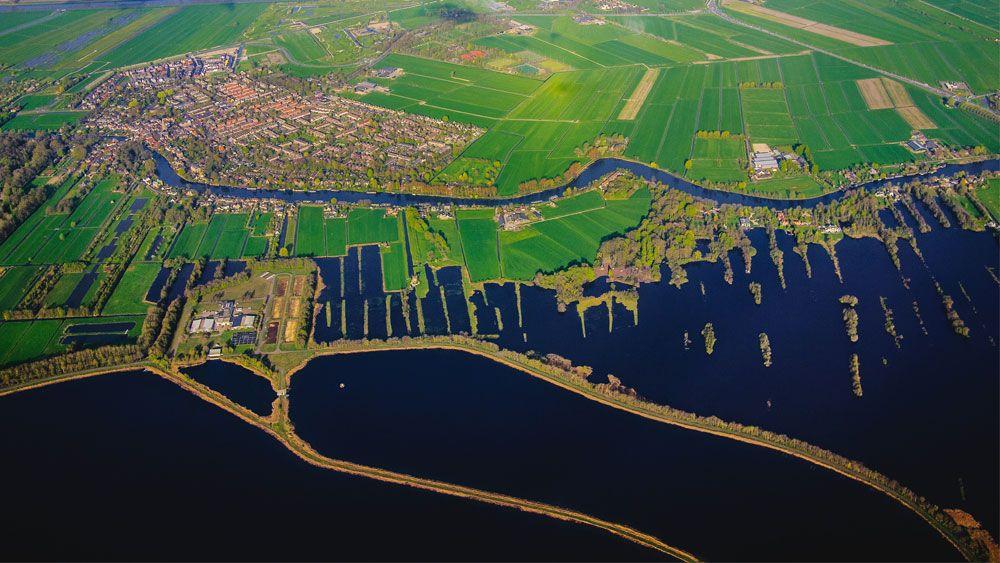Around-the-Clock Service: Smart Lockers Revolutionizing City Operations
Around-the-Clock Service: Smart Lockers Revolutionizing City Operations
Municipal services are the backbone of any city or town. Local governments are responsible for providing a range of services, such as document distribution, postal services, and tax payments, among others. These services need to be efficient and accessible to all residents and businesses. In recent years, smart lockers have emerged as the go-to solution for improving municipal services. In this blog post, we'll explore how document collection or distribution points with smart lockers can help streamline municipal and government services.
Immediate and 24/7 Accessibility: A Closer Look at the Power of Smart Lockers
In our fast-paced world, accessibility to essential services outside the conventional working hours isn't just a luxury but an increasingly necessary feature. The adoption of smart lockers by municipalities for document collection and distribution showcases how technology is bridging the gap between residents' needs and efficient governance. Let's delve deeper into the implications of 24/7 accessibility through smart lockers.
Adapting to the Modern Urban Lifestyle
Urban lifestyles have evolved beyond the traditional 9-to-5 routine. Many residents work unconventional hours, juggle multiple jobs, or have commitments that make it challenging to access municipal services during standard office timings. Smart lockers cater to this diversified schedule, offering flexibility that's in sync with modern living.
Reducing the Pressure on Municipal Staff
The rush hour at municipal offices often sees an influx of residents trying to access services in a limited window, leading to pressure on the staff and extended waiting times for the public. By providing 24/7 accessibility, smart lockers distribute the demand throughout the day and night, allowing for a more even distribution of collections and reducing peak-time pressure.

Promoting a Culture of Self-Service
There's a growing trend towards self-service in many industries, from banking to grocery shopping. Smart lockers extend this culture to municipal services. By allowing residents to access their documents without direct interaction with a service representative, it promotes a sense of autonomy and can even lead to faster and more efficient service experiences.
Emergency Access and Critical Needs
There might be situations where residents require urgent access to essential documents, be it due to medical emergencies, unexpected travel, or any unforeseen circumstances. The round-the-clock accessibility of smart lockers ensures that residents can retrieve crucial documents even in emergencies.
Enhancing Resident Satisfaction
One of the main advantages of 24/7 accessibility is the enhancement of resident satisfaction. When people feel that their needs are prioritized and that they can access services at their convenience, it fosters a sense of trust and satisfaction with local governance.
Safety and Security Even After-Hours
One might question the security of accessing these lockers late at night or in the early hours. Advanced smart lockers come equipped with security features like surveillance cameras, well-lit areas, and secure access mechanisms, ensuring safety for residents no matter when they choose to access the services.
Immediate and 24/7 accessibility via smart lockers isn't just about convenience; it's a reflection of how governance and municipal services are evolving to meet the dynamic needs of the modern urban populace. As cities and towns continue to grow and diversify, solutions that prioritize accessibility will be paramount in ensuring that all residents, regardless of their schedules or lifestyles, feel catered to and valued.
Enhanced Security and Privacy: How Smart Lockers Transform the Safety of Document Handling
In an age where information security and personal privacy are of utmost importance, the traditional methods of document distribution and collection sometimes fall short. Enter the smart lockers: the epitome of technological advancement that addresses both these concerns in municipal services. Here's how smart lockers elevate the security and privacy measures for sensitive documents.
1. Personalized Access Control
Smart lockers use sophisticated access control mechanisms. They typically require a combination of unique codes, biometric verification, or even QR scans sent directly to the recipient's phone. This personalized access ensures that only the designated individual can retrieve the document, minimizing the chance of unauthorized access.
2. Digital Audit Trails
Every interaction with a smart locker is logged digitally. From the moment a document is placed inside to the second it's retrieved, there's a comprehensive digital record. This audit trail is invaluable for tracking purposes, providing accountability and transparency in the distribution process.
3. Reduced Human Error
Traditional methods of document distribution rely heavily on human interactions, leading to potential errors such as handing over documents to the wrong person or misplacing them. Smart lockers eliminate many of these human-induced errors by automating the distribution process.
4. Secure Storage
Advanced smart lockers are built to withstand tampering. They often come with alarms, reinforced structures, and other anti-theft measures that deter potential intruders. Additionally, they may be placed in well-lit, high-traffic areas to further ensure safety.
5. Confidentiality Maintained
One of the overlooked aspects of traditional document handovers is the exposure risk. Even unintentional glances at sensitive documents can breach confidentiality. With smart lockers, documents remain securely enclosed until the intended recipient accesses them, ensuring total privacy.
6. Real-time Notifications
Most smart lockers are connected to a cloud system or app interface. When a document is deposited or retrieved, real-time notifications are sent to the recipient and the issuing authority. This instant communication ensures that the recipient is aware of the document's status and can act immediately if there are any discrepancies.
7. Data Encryption
For smart lockers connected to online systems, data encryption is paramount. This ensures that any digital communication between the locker system, the municipal service, and the recipient remains confidential and safe from potential cyber threats.
8. Backup and Recovery
In the rare event that something goes wrong, smart locker systems typically have backup and recovery protocols. This ensures that even in the face of technical glitches, the security and integrity of the documents remain uncompromised.
In the rapidly digitalizing world, security and privacy concerns are front and center. Municipalities, by adopting smart locker systems, show their commitment to safeguarding the sensitive information of their residents. With the fusion of hardware robustness and digital sophistication, smart lockers are not just a step but a leap forward in ensuring the safe and private distribution of documents.

Reduction in Queues and Waiting Times: The Efficiency of Smart Lockers in Municipal Services
Waiting in long queues at municipal offices can be one of the most tedious experiences. It's not just a waste of time, but it also can be a test of patience, especially when one has other commitments or is in a hurry. Thankfully, with the introduction of smart lockers in municipal services, this age-old problem is being addressed, offering a more streamlined and efficient approach to document distribution and collection. Here’s how smart lockers play a pivotal role in cutting down those dreaded waiting times.
1. Self-Service Approach
One of the most significant advantages of smart lockers is their self-service nature. Instead of being dependent on a service desk officer to assist with the document handover, individuals can now independently access their documents from designated lockers. This not only speeds up the process but also means that multiple people can access different lockers simultaneously, dramatically reducing wait times.
2. Pre-Scheduled Drop-offs and Pick-ups
Advanced smart locker systems allow for scheduling. Residents can be given a specific time slot to deposit or collect their documents. This scheduling ensures a more evenly distributed flow of people, preventing the rush-hour crowds that often lead to long lines.
3. Digital Alerts and Notifications
With the integration of technology, smart lockers often come equipped with notification systems. As soon as a document is ready for collection, the recipient gets a notification, allowing them to plan their visit at a convenient time. This reduces the number of people who might show up speculatively, hoping their document is ready.
4. Efficient Space Utilization
Given their compact nature, smart lockers can be strategically placed in various locations – not just within the primary municipal office. This decentralization means more points of collection, which spreads out the number of people accessing the service, reducing bottlenecks.
5. Improved Staff Efficiency
With smart lockers handling the distribution and collection of documents, municipal staff can focus on other essential tasks. This ensures that any queries or concerns residents have are addressed more promptly, adding to the efficiency of the entire system.
6. Real-time Monitoring and Feedback
Many smart locker systems come with integrated software that provides real-time data on locker usage. This data can be invaluable for municipal authorities to identify peak times, usage patterns, and potential areas of concern. With this information, strategies can be implemented to further reduce wait times.
In a world that values time and efficiency, waiting in long queues for essential documents can be frustrating. Smart lockers, with their blend of technology and user-centric design, are revolutionizing the way municipal services operate. By significantly reducing queues and waiting times, they ensure that residents have a smoother, more pleasant experience while interacting with local government offices.
Eco-friendly and Sustainable: The Green Side of Smart Lockers in Municipal Services
Urban areas, with their ever-growing population and infrastructural demands, are significant contributors to global environmental challenges. Addressing these challenges requires solutions that are both technologically advanced and ecologically considerate. This is where smart lockers, especially in the context of municipal services, stand out. Not only do they modernize and streamline operations, but they also introduce sustainability and environmental consciousness into the mix.
1. Solar-Powered Solutions
A defining feature of many contemporary smart locker systems is the integration of renewable energy sources. Solar panels affixed to these lockers can harness sunlight, converting it into electricity. This reduces the dependence on traditional, non-renewable energy sources, curbing carbon emissions. Plus, the decentralized nature of solar energy means these lockers can function even during power outages, ensuring uninterrupted service.
2. Reducing Paper Wastage
One of the significant environmental costs of traditional municipal services is the extensive paperwork involved. From application forms to notifications and receipts, the amount of paper used can be staggering. Smart lockers often integrate with digital platforms, allowing for e-receipts, online applications, and digital notifications. This shift from paper to pixels significantly reduces the demand for paper, curbing deforestation and waste.
3. Efficient Use of Resources
Modern smart lockers are designed to be resource-efficient. Built with durable materials, they have a long operational lifespan, reducing the frequency of replacements and conserving materials. Moreover, their design often incorporates energy-efficient components, such as LED lights for illumination, which consume less power and reduce the overall energy footprint.
4. Decreasing Vehicle Emissions
Given that smart lockers can be strategically placed in multiple locations, residents don't need to travel long distances or make multiple trips to municipal offices. This decreases the number of vehicles on the road, leading to reduced fuel consumption and emissions. Over time, this can contribute significantly to improving urban air quality.
5. Reducing Building and Infrastructure Pressures
As more municipal services transition to smart lockers and digital platforms, there's reduced pressure on physical infrastructure. Fewer people visiting offices in person means less need for large, resource-intensive buildings. The saved infrastructure costs can be redirected towards more eco-friendly initiatives, amplifying the sustainability impact.
6. E-waste Management
Responsible smart locker manufacturers also consider the end-of-life phase of their products. They incorporate designs that are modular, allowing for easy repair, upgrades, and recycling. By ensuring that worn-out or obsolete components can be replaced or recycled, they minimize e-waste and its environmental impact.
Smart lockers are not just about convenience and efficiency; they embody a forward-thinking approach to urban development, where technological advancement walks hand-in-hand with sustainability. As municipalities around the world grapple with the dual challenges of delivering efficient services and mitigating environmental impact, smart lockers offer a compelling solution. Their integration into municipal systems promises a future where cities are not just smarter but greener too.
5. Real-time Tracking and Notifications: The Pulse of Modern Municipal Services
The age of waiting indefinitely for important documents or standing in queues, unsure of the status of one's request, is slowly becoming archaic. With smart lockers, residents are plugged into a real-time information network.
Instant Updates: One of the significant advantages is the immediacy of notifications. As soon as a document is stored or any update is made, residents are alerted, reducing uncertainty and increasing confidence in the system.
Transparency and Accountability: Real-time tracking ensures that both the administration and the resident are on the same page. The municipal office can easily verify if and when a document was collected, and by whom, adding a layer of accountability to the process.
Reduced Delays: With instant notifications, the chance of documents lying unclaimed diminishes, ensuring that processes move forward without unnecessary delays.
6. Cost Savings for Municipal Bodies: Doing More with Less
Automation via smart lockers means reduced manpower hours spent on repetitive tasks such as sorting, notifying, and handing over documents. This translates to:
Optimized Manpower Utilization: Freed from these tasks, municipal employees can focus on more value-added activities, enhancing service quality and efficiency.
Lower Overheads: Reduced need for physical infrastructure (like storage rooms or additional counters) and fewer hours spent on manual tasks mean tangible cost savings.
7. Scalability for Growing Cities: Ready for Tomorrow
A city's needs aren't static. As populations grow and urban areas expand, services must evolve to keep pace.
Modular Expansion: Smart lockers are modular, meaning they can be easily added to as demand grows. This avoids large-scale infrastructure overhauls.
Diverse Locations: Lockers can be strategically placed in various parts of the city, ensuring even newly developed areas have easy access to municipal services.

8. Enhanced Data Collection and Analysis: Turning Insights into Action
Data is the lifeblood of modern administration. The digital nature of smart lockers ensures a constant stream of valuable data.
Rich Data Sets: From understanding which services are most in demand to recognizing patterns in collection times, the data harvested can offer a detailed picture of residents' needs and behaviors.
Informed Decision Making: Data-driven insights can guide municipal bodies in resource allocation, locker placement, and even in understanding when to scale up (or down) certain services.
Predictive Analysis: Over time, this data can also be used to make predictions. For instance, if a trend shows an increase in a particular type of document request, the municipality can proactively allocate resources in anticipation.
Incorporating smart lockers into municipal service delivery is akin to giving local governance a technological upgrade. It ensures services are swift, transparent, efficient, and adaptable to the changing demands of a dynamic urban populace. As cities look towards a future where citizen satisfaction and operational efficiency are paramount, smart lockers stand out as a beacon of modernization.
